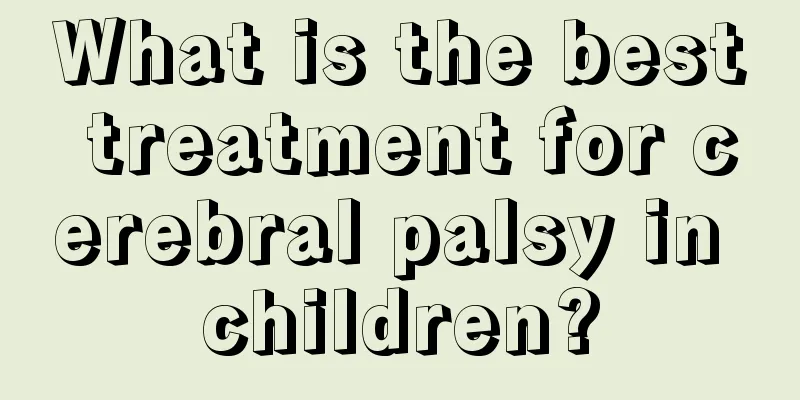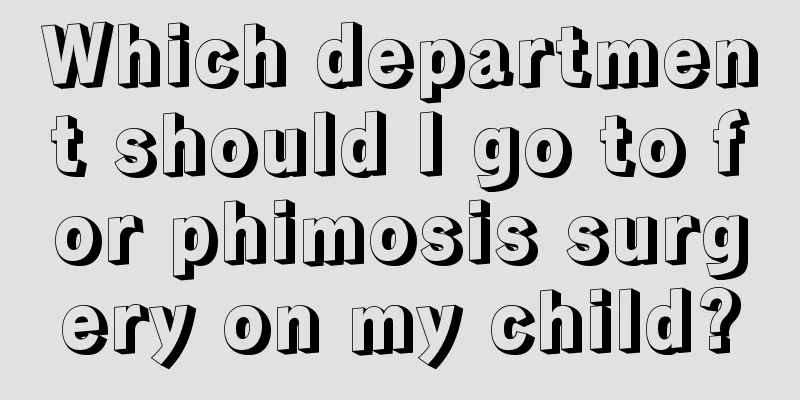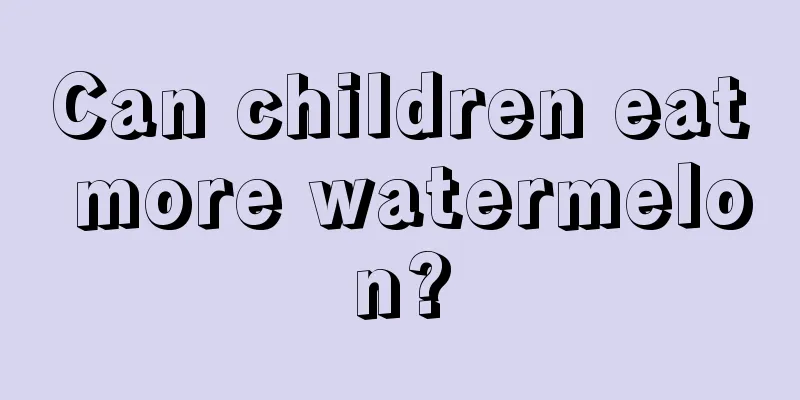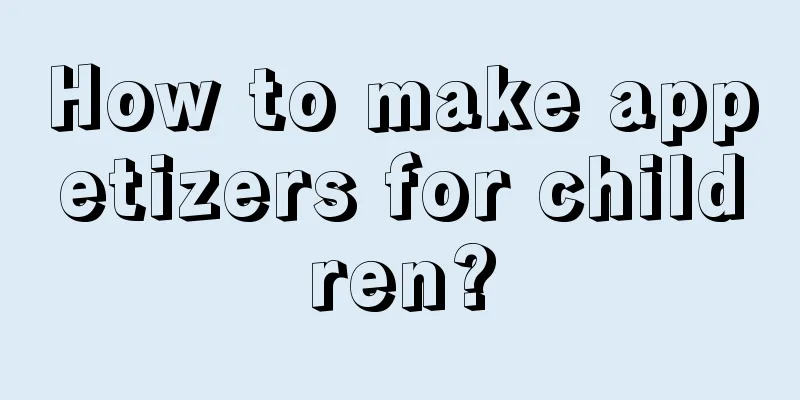What to do if children have hemorrhoids

|
Although hemorrhoids are more common among adults and the incidence rate is relatively low for children, the possibility of hemorrhoids cannot be ruled out. What should we do if children have hemorrhoids? It is understood that the formation of hemorrhoids in children is mostly related to constipation. At this time, children will feel anal pain. Parents should understand it in time and do a good job of care. Once hemorrhoids prolapse, seek medical attention in time. 1. Symptoms Symptoms of hemorrhoids in children - abnormal bowel movements Babies often have dry stools due to formula feeding, breastfeeding disorders, or picky eating. Over time, constipation will gradually develop. The stool will not only be dry and hard, but also black and thick. If the baby has difficulty defecating, he will definitely cry and make a fuss, and will not stop for a moment. Mothers must not think that the child is throwing a tantrum. If you find this situation, you must carefully observe the baby's abdomen to see if there is any hardness, and whether the anus is congested, red, or swollen due to difficulty in defecation, or has other characteristics. Symptoms of hemorrhoids in children - blood in stool There are many reasons for babies to have bloody stools, such as intestinal diseases such as polyps, anal fissures, internal hemorrhoids, anal foreign body injury, etc. The most obvious symptom of hemorrhoids in children is blood in the stool caused by internal hemorrhoids. Internal hemorrhoids are caused by varicose veins of the local submucosal rectum. The characteristic is that there is a purple-red nodule at the anus when defecating, coughing or crying. There is no pain at first, but there is just an itching or foreign body sensation in the anus, and children will often scratch their anus with their hands. During bowel movements, the purple-red nodule at the anus becomes larger, and blood in the stool occurs due to wear and tear or rupture. Some are simple anal bleeding, some are accompanied by bowel movements. The blood is bright red and the amount of blood is relatively large. It is in the form of drops or sometimes in the form of sprays. It is generally painless. If incarceration occurs, it will be painful. Internal hemorrhoids in children are mostly simple internal hemorrhoids, and mixed hemorrhoids are rare. Symptoms of hemorrhoids in children - pain Young children's skin is delicate and very sensitive, and they react greatly, especially to pain. If the hemorrhoidal veins are ruptured due to excessive force and thrombosed external hemorrhoids are formed, the anus will be very painful and the child will be afraid to defecate or will cry when defecating. Moreover, hemorrhoids are usually caused by long-term constipation, which leads to dry and hard stools, abrasions of the hemorrhoidal mucosa or skin, and defecation may be accompanied by pain. It must be distinguished from rectal polyps and anal fissures. Symptoms of hemorrhoids in children - prolapse Children are generally prone to internal hemorrhoids, so the prolapsed material is likely to be internal hemorrhoids. If hemorrhoids prolapse, you must go to the hospital for diagnosis and treatment in time to distinguish them from polyps and other tumors. Prolapse can easily cause secretions in the anus and cause anal itching. At this time, you must clean the affected area for your baby in time to avoid infection. [1] 2. Treatment Methods ⒈ The incidence of hemorrhoids in children is low, and treatment should be simple and painless methods such as external treatment of traditional Chinese medicine. Pay more attention to adjusting the diet and let children eat more fresh vegetables, fruits and honey; clean the anus with warm water after defecation or before going to bed to improve anal blood circulation. ⑴ When you feel pain, you can use compound aspirin or painkillers, 2 tablets each time, 3 times a day. ⑵If there is inflammation, you can use: Co-trimoxazole, 2 tablets each time (4 tablets for the first time), take medcamycin orally twice a day, 0.3 vials each time, orally 3 times a day. If conditions permit, penicillin can be used, 800,000 units each time, injected intramuscularly once every 6 hours. Streptomycin, 0.5 g each time, intramuscular injection once every 12 hours. Use with penicillin. |
<<: Is it normal for a girl to have vaginal discharge?
>>: Can I use a cold towel on my child's forehead when he has a fever?
Recommend
How to treat hemolytic jaundice in infants
Recently, the smog documentary "Under the Do...
Testicular pain in children
Children's health is the most concerned issue...
How much milk should a newborn baby drink?
The growth and development of newborns is an issu...
How to overcome phobia after a child is frightened?
I believe everyone knows that children’s hearts a...
What to do if your child has tooth decay
I believe everyone knows about dental caries. Man...
What to do if your child has spots on his face
I believe many people will envy and be jealous of...
Water temperature for preparing milk powder for newborn
It is not easy to make milk powder for babies, bu...
How to solve the problem of children coughing at night
Many parents will find that their children cough ...
When is the best time to circumcise a child?
Many parents find that their children have foresk...
Is it normal for a baby to have bilateral ventriculomegaly?
Nowadays, many parents will find that their babie...
What should I do if my child has a toothache and a swollen face?
Children will encounter many problems as they gro...
Symptoms of pharyngitis in children
Pediatric pharyngitis is a common respiratory tra...
What are the symptoms of tuberculosis in babies?
Tuberculosis is a disease that can easily damage ...
What to do if the baby chokes when drinking water
If you want to take better care of your baby and ...
Reasons for tears in one eye of a baby
In fact, babies are not so familiar with the envi...









